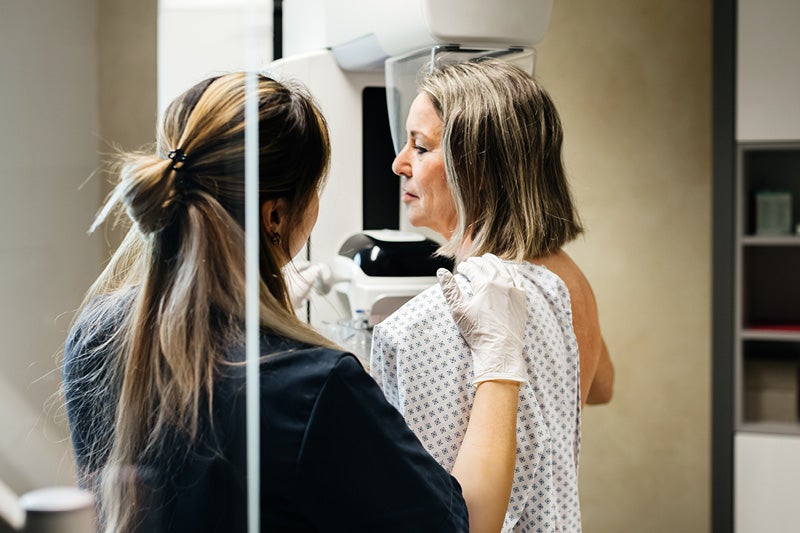Know your breasts: mammograms, self-exams and family history
June 27, 2025Categories: Women's Health

Overview: Learn how mammograms, self-exams, and understanding your family history can empower you to take charge of your breast health.
Women should start getting mammograms at age 40 unless you have a family history of breast cancer, according to the American College of Radiology. Breast cancer can happen to anyone, at any time and at any age, so it’s important you do self-screenings and know your breasts.
What happens at a mammogram appointment?
Visits for screening mammograms are typically very brief, usually no more than 10 minutes. First, you will fill out your breast health history for the technologist, answering questions about your personal health, as well as any pertinent family history related to breast health. After that, you’ll be escorted to the exam room and change into a gown.
When you’re ready, your technologist will explain the exam to you in detail. We typically take anywhere from four to eight images during your first mammogram. Your breast will be gently compressed during each picture. This shouldn't hurt you – it’s more of a tight, heavy feeling on your breast that will only last for a few seconds. As soon as the image is taken, the compression paddle will automatically release up and off your breast.
The technologist is able to review each image as soon as it's done to ensure a diagnostic quality image has been captured. In the event there is any motion, skin folds, or other artifacts noticed by the technologist, additional imaging can be taken while you are here. Once all of your imaging is complete, you're free to change back into your clothes and leave.
What to do in-between mammogram appointments?
- Check your breasts monthly with self-exams. During this quick exam, you’ll look for any changes like new lumps, skin dimpling or changes in your nipples (like retraction and discharge). If you notice any differences, reach out to your provider right away for a clinical evaluation or to order diagnostic imaging of your breast.
- Know your breast density. Breast density describes the thickness of the tissue inside your breasts. The denser your breast tissue, the harder it is to detect breast cancer on a mammogram, as both breast cancer and dense tissue appear white. 3D imaging helps the radiologist "see through" the dense tissue layer by layer – kind of like turning pages in a book.
- Get yearly mammograms. No matter your breast density, it’s important to have annual screening mammograms. Every woman is told their breast density with their mammogram screening. Learning about your breast density allows you to be aware of what’s normal for you and notice any changes.
Read how early detection helped Lindsay
How does family history play into when you should get your first mammogram?
If a close relative like a parent, sibling or aunt has been diagnosed with breast cancer, it’s recommended to begin screening 10 years before the age breast cancer was diagnosed in that relative. However, it's not recommended to begin screening before age 30.
For example:
- If your mom was diagnosed at 43, you should start at 33.
- If your sister was diagnosed at 33, you should start at 30.
How genetics impacts your chances of breast cancer
Remember: Regular screening mammograms help find cancer earlier and save lives! You can decrease your risk of developing breast cancer by maintaining a healthy weight, exercising and not smoking. If found early, breast cancer is treatable.
This blog was medically reviewed by a MercyOne Provider
